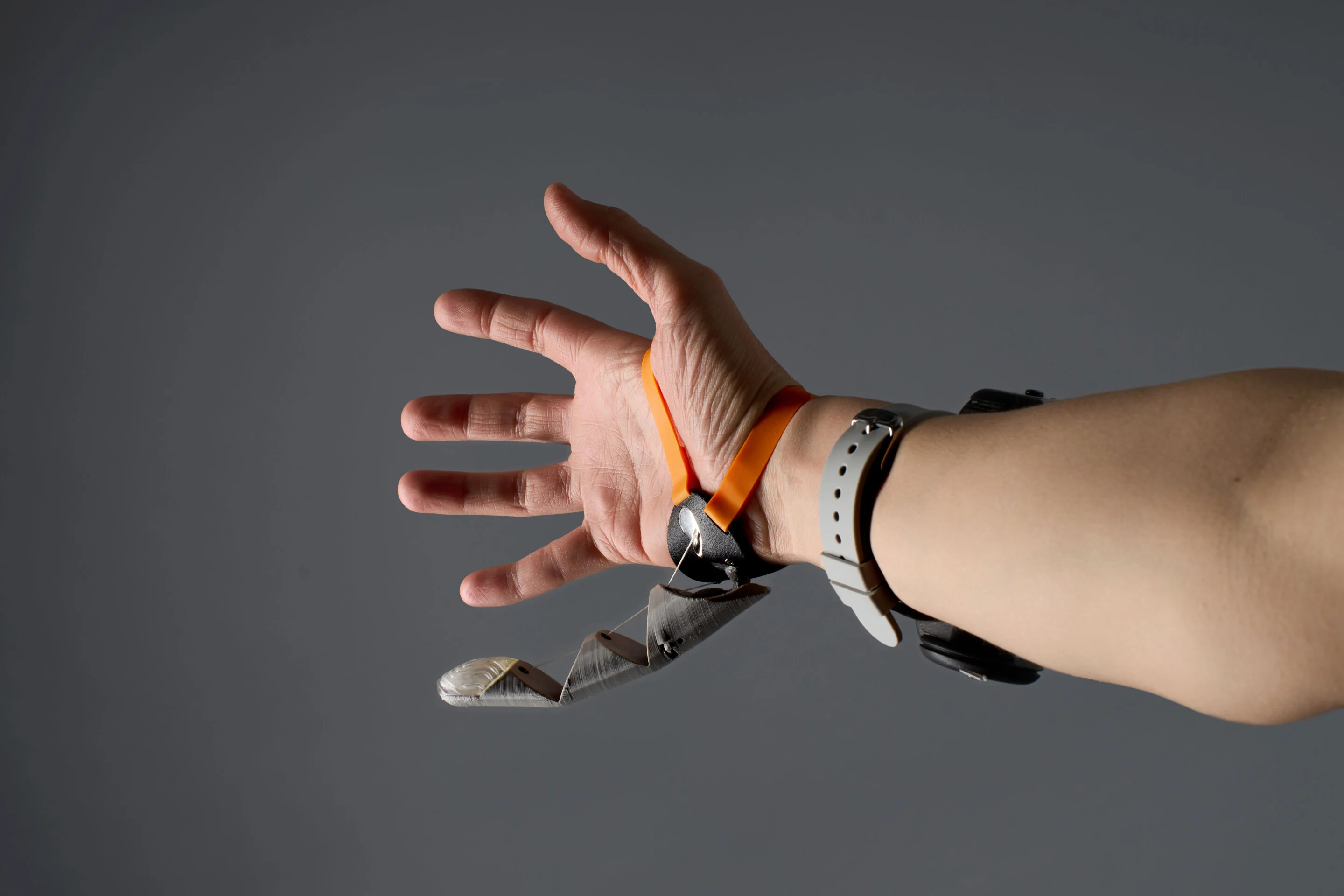Cambridge researchers have shown that members of the public have little trouble in learning very quickly how to use a third thumb—a controllable, prosthetic extra thumb—to pick up and manipulate objects.
The team tested the robotic device on a diverse range of participants, which they say is essential for ensuring new technologies are inclusive and can work for everyone. The results are published in Science Robotics.
An emerging area of future technology is motor augmentation—using motorized wearable devices such as exoskeletons or extra robotic body parts to advance our motor capabilities beyond current biological limitations.
While such devices could improve the quality of life for healthy individuals who want to enhance their productivity, the same technologies can also provide people with disabilities new ways to interact with their environment.
…
Dani Clode, a collaborator within Professor Makin’s lab, has developed the Third Thumb, an extra robotic thumb aimed at increasing the wearer’s range of movement, enhancing their grasping capability and expanding the carrying capacity of the hand. This allows the user to perform tasks that might be otherwise challenging or impossible to complete with one hand or to perform complex multi-handed tasks without having to coordinate with other people.
The Third Thumb is worn on the opposite side of the palm to the biological thumb and controlled by a pressure sensor placed under each big toe or foot. Pressure from the right toe pulls the Thumb across the hand, while the pressure exerted with the left toe pulls the Thumb up toward the fingers. The extent of the Thumb’s movement is proportional to the pressure applied, and releasing pressure moves it back to its original position.



kids these days only wanna eat hot chip lie and charge they thumb